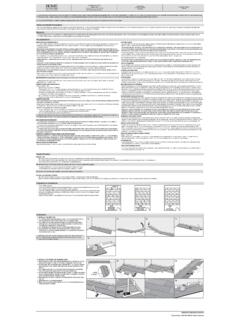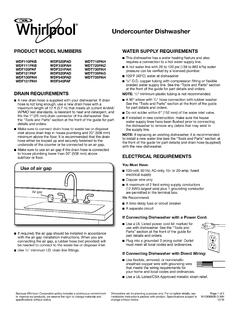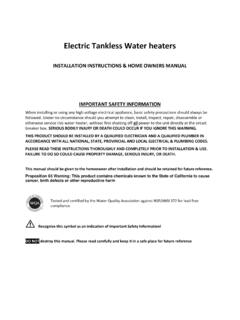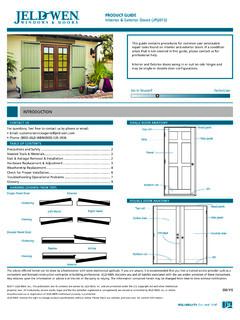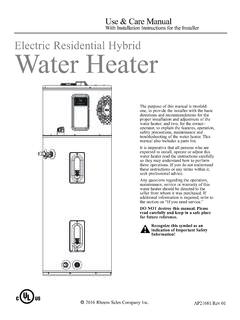Transcription of Bathroom Vanity Care Guide
1 Bathroom Vanity care Guide care of Stone top Although the product is sealed at the manufacturer, sealants are only a temporary barrier. Regular sealing is recommended to protect your stone s finish. Cleaning Stone top Use a neutral soap with warm water to clean. A neutral soap is any soap that you would use on your hands such as soft soaps or mild dish soaps. DO NOT use any soap containing abrasives and/or stain removing chemicals like chlorine. When cleaning stone, soft sponges or soft cotton rags should be used in cleaning. For heavier cleaning, it is recommended to use cleaners especially formulated for natural stone. Cleaners are available for general maintenance as well as heavy duty cleaning and stain removal.
2 Maintenance of Stone top A matte clear stone sealant should be applied every 3 to 6 months depending on use and water conditions. If the sink is used heavily (every day), the sealer should be applied every 3 months or earlier. If the sink is only used a few times per week the sealer can be applied every 6 months or earlier. A key indicator that a sealer is required is when water no longer beads on the surface of the stone. General care for Stone Although the use of a high-quality penetrating sealer reduces the potential for deep, difficult-to-remove stains, please note that sealing is not fail-safe. It is best to keep chemicals such as chlorine (bleach), fingernail polish remover, fingernail polish, oils, paints, etc.
3 , away from the sink. Spills should be wiped up as soon as possible. Stone, like any other natural product, will age and patina, adding to its beauty and character. Caring for Furniture with Painted Finishes Textured and brushed-painted finishes that have an eggshell sheen lacquer should not be waxed or polished, as they will acquire an undesirable higher sheen. For cleaning, use mild, soapy water, and then dry the surface immediately with a clean, soft cloth. Tips for Preserving Furniture Spills should never be wiped; they should be blotted immediately. If water stands on the surface, there is the possibility that it will cause white marks in the lacquer finish.
4 You can remove these blemishes by heating the area with a hair dryer and applying Endust while the surface is still warm. Follow by buffing with a soft cloth and reapply paste wax if needed. If perfume or nail polish remover is spilled, do not wipe or blot it. The lacquer that has been softened by the chemicals should return to normal when the liquid has totally evaporated. Allow the area to dry, rub it with a fine automotive polishing compound, and then apply a fresh coat of wax. If candle wax drops on your wood-finished surface, hold an ice cube to the wax to harden it. Blot up the water, and use a dull plastic spatula to remove the wax without touching the wood.
5 Gently scrape away any remaining wax, and rub the area with furniture wax to replace the protective coating. Wood is a natural product. Sun bleaching will occur when wood furniture is exposed to sunlight. This will cause darker finishes to lighten and sometimes cause lighter finishes to darken. For this reason, try to avoid placing furniture in direct sunlight and rearrange accessories from time to time to prevent spot bleaching. Some bleaching will occur under both incandescent and fluorescent lighting. Arrange your furniture so that it does not sit near heat registers, air-conditioning units or radiators. It is important to keep the home or office in which your furniture is placed properly humidified.
6 Lack of humidity (usually in winter months or in dry climates) can cause certain veneers to check and joints to work.
